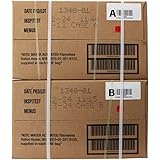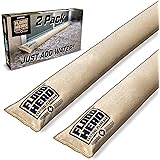Create a Family Emergency Plan
Identifying Escape Routes
One of the first things I did when creating my family emergency plan was to identify multiple escape routes. Having different options ensures we’re covered no matter where we are in the house when disaster strikes. We mapped out primary and secondary exits and established a meeting point a safe distance from our home.
This is especially key if you have young kids. I made sure to practice these routes multiple times so everyone remembered them, even under stress. We also assigned responsibilities: who was grabbing the emergency kit, who was checking on the pets—small but crucial details.
Don’t forget to consider scenarios like blocked exits or paths due to debris. Flexibility and a clear head are your allies here, and I found it helpful to run through these plans in my mind often.
Communication Plan
I quickly discovered that having a solid communication plan could make all the difference. Everyone in the family should know who to contact and how in case of emergencies. We have a designated family member outside our immediate area whom we all check in with to relay our status and receive updates.
We also set up an emergency contact list that includes numbers for local services and utilities, and shared it digitally and physically. It’s a good idea to write these down since cell phones might not always work. I even went as far as teaching my kids to memorize this list, just in case.
Additionally, we discussed and decided on signals or phrases we could use to communicate quickly and clearly if phone lines were jammed or we couldn’t talk directly. Being prepared really helps take the edge off when you’re facing the unknown.
Special Needs Considerations
If you’ve got family members with special needs, this part might take a bit more effort, but it’s vital. For us, it meant accounting for my grandmother’s mobility issues. We identified neighbors and community resources that could help us in transferring her safely if needed.
We also made extra preparations for medical supplies she might need, including keeping a list of her prescriptions and having an extra set of her medications in our emergency kit. This made a world of difference for our peace of mind.
== > What if ... Get a FREE Subscription to PREPARE
Think about everyone’s specific needs, whether it’s dietary requirements, medical devices, or emotional comfort items like a favorite toy for the little ones. The more personalized the plan, the safer and more comfortable everyone will feel.
Assemble an Emergency Kit
Basic Supplies
An emergency kit is non-negotiable. Ours includes essentials like water, non-perishable food, a first-aid kit, and blankets. Each item serves a specific purpose, ready to support us if we’re stuck indoors or need to evacuate in a hurry.
Depending on your family’s size and needs, adjust quantities accordingly—I kept a checklist and updated it every few months to ensure nothing was expired or missing. Remember, my friend Britt once told me to add a manual can opener; believe me, you don’t want to realize you need one after the fact!
Also, consider the season. In winter, I pack warm clothes and hand warmers, while in summer, I add items for heat relief. Tailoring your kit to the current and anticipated conditions can seriously help.
Medical and Hygiene Supplies
If there’s one thing you don’t want to overlook, it’s medical supplies. Aside from basic first aid items, I included personal medications and a basic guide on how to use each item. Re-stock here is crucial, so keep an eye on expiration dates and quantities.
Hygiene supplies, too, are more important than you might initially think. We packed toiletries, sanitation wipes, garbage bags, and feminine hygiene products. Maintaining cleanliness can help prevent added health issues during stressful times.
I also threw in some masks and gloves, considering the ongoing pandemic scenarios. This section of the kit evolves as we learn more and face different types of disaster risks.
Tools and Gear
Don’t skimp on tools and gear; they can be lifesavers. Items like a multi-purpose tool, flashlights, batteries, and a portable phone charger are in our kit. We even have a small, crank-operated emergency radio for weather updates.
My neighbor Ben suggested adding waterproof matches and a fire extinguisher, which was a great call. You never know what type of situation you’ll face, and being over-prepared is better than under-prepared.
For comfort and security, have a spare set of clothes for each family member, sturdy shoes, and even a small tent or shelter. These additions can make a significant difference in an extended emergency situation.
Stay Informed about Potential Disasters
Weather Alerts and Apps
Staying in the loop with weather alerts and emergency apps is something you just can’t overlook. I’ve downloaded a few weather and emergency alert apps on my phone. They send instant notifications about any impending threats in our area.
These tools can oftentimes provide critical minutes or even hours of advance notice, giving us precious time to put our plan into action. Subscribing to local government and news alerts through these apps can also keep you updated with real-time info.
I also make a habit of checking weather forecasts regularly, especially when storms are predicted. Even if it’s inconvenient, it’s better to be prepared and have nothing happen than the reverse.
Know Your Community’s Risks
Each community has its specific set of risks. Familiarizing myself with these helped us tailor our preparedness plan more effectively. We researched local natural disaster histories, common man-made hazards, and government resources in our area.
We even took a few community courses on disaster preparedness that our local fire department offered. These classes were eye-opening and really helped solidify our knowledge and readiness. It’s also a great way to meet others and share tips.
Understanding the frequency and type of risks in your community helps optimize your preparation strategy. It’s something I wish more people would take seriously, as it’s incredibly insightful.
Monitor Local News
While it might sound old-school, keeping an eye on local news is crucial. TV, radio, and newspapers still play a pivotal role. They’re often the fastest to deliver breaking news specific to your locality.
I keep a small battery-operated radio in our emergency kit for this exact reason. Trust me, during power outages when cell networks are down, this can be your lifeline. Knowing what’s going on around you helps make informed decisions quickly.
Additionally, being in tune with what’s happening locally means you can be part of community support efforts, helping families around you who might not be as prepared. It also fosters a sense of communal responsibility.
Practice Emergency Drills Regularly
Conducting Home Drills
Practice makes perfect, and that’s no different when it comes to emergency preparedness. We regularly conduct home drills to ingrain the plan into everyone’s mind. This includes fire drills, earthquake drills, and even simple things like where to go during a severe storm.
Initially, these drills were chaotic, but with time we became more coordinated. It’s important to treat drills seriously, as muscle memory can play a big role during actual emergencies. Each drill helps identify gaps in our plan, enabling us to adjust accordingly.
Making drills a routine activity means everyone’s likely to remain calm and collected under disaster conditions. We block out time specifically for this—think of it as an investment in safety that nobody can afford to skip.
Involving All Family Members
Disasters don’t discriminate based on age, so it’s critical for everyone in the family to be involved. We make sure even the youngest members understand basic things like how to dial emergency services and where the safe spots in the house are.
I also explained why each step of the plan is important without sugarcoating the potential risks too much. Kids can be surprisingly resilient and understanding when they grasp the gravity of a situation. We even turned some drills into games to keep it engaging.
For elderly family members or those with mobility challenges, assigning specific roles and having tailored plans in place ensures everyone knows their responsibilities and can assist each other effectively.
Simulate Different Scenarios
Running through different disaster scenarios helps us stay sharp. We practice for varied situations like daytime versus nighttime emergencies, different weather conditions, and even scenarios where some family members might be away from home.
Each scenario is an opportunity to test a different part of our emergency plan. We learned to adapt and react quickly, which are crucial skills during real disasters. This approach keeps us prepared for the unexpected loopholes that textbooks might miss.
It’s also worth considering “worst-case” scenarios. While it might sound like overkill, knowing we’ve thought through the most challenging circumstances gives us an added layer of confidence and readiness.
Frequently Asked Questions (FAQs)
What should be included in a family emergency plan?
A family emergency plan should include escape routes, a communication plan, and special needs considerations. Assign roles to each family member and ensure everyone knows the steps to take during specific emergencies.
How often should emergency kits be updated?
Emergency kits should be updated every six months to ensure supplies are not expired, damaged, or spoiled. Periodically review and refresh items based on changing family needs or seasonal considerations.
What are some essential items for an emergency kit?
Essential items include water, non-perishable food, a first aid kit, medications, hygiene products, tools, and emergency gear such as flashlights, batteries, and a multi-purpose tool. Tailor the kit based on specific family needs.
Why is practicing emergency drills important?
Practicing emergency drills is crucial as it helps ingrain the plan into everyone’s memory, ensuring that family members can act calmly and effectively during an actual disaster. It also helps identify and address any weaknesses in the plan.
Related Content
Augason Farms Dehydrated Cross Cut Celery Can, Emergency Food Supply, Everyday Meals, 36 Servings
$18.35 (as of December 25, 2025 18:19 GMT -05:00 - More infoProduct prices and availability are accurate as of the date/time indicated and are subject to change. Any price and availability information displayed on [relevant Amazon Site(s), as applicable] at the time of purchase will apply to the purchase of this product.)Wornick Sopacko, Ameriqual MRE Meals Ready to Eat Inspection 2025, 2026 or Better, Emergency Food Supply, Survival Camping Outdoor 12 Pack(A & B Case Bundle, 2, Count)
Now retrieving the price.
(as of December 25, 2025 18:19 GMT -05:00 - More infoProduct prices and availability are accurate as of the date/time indicated and are subject to change. Any price and availability information displayed on [relevant Amazon Site(s), as applicable] at the time of purchase will apply to the purchase of this product.)





